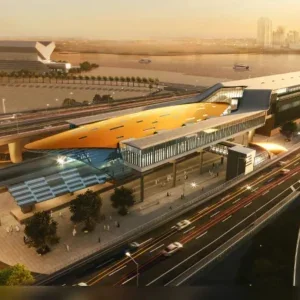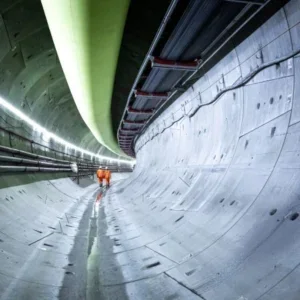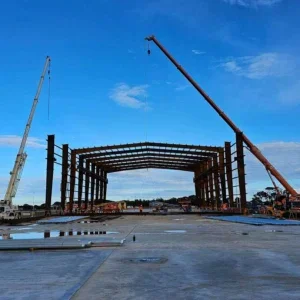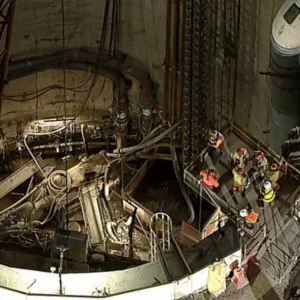Two tunnels in northern Swaziland constructed by drill+blast were completed recently. The 386m long 9m x 8m diversion tunnel and the 460m long 7m x 8m outlet tunnel form part of the $64m, 115m high Maguga Dam scheme, which will augment the supply of water for the irrigation of sugar cane both in Swaziland and South Africa.
The tunnels were excavated full face by the drill+blast method, the holes being drilled by an Atlas Copco rig fitted with three telescopic booms equipped with hydraulic hammers. The blasting material used was non-explosive emulsion, sensitised by gassing when the holes are charged and then detonated non-electronically.
Excavation was carried out through the granite of the 3000 million year old Swaziland Supergroup series. The rock was generally very good and required average support except at the outlet portals, where the rock jointing was very unfavourable and required extensive rockbolting and shotcrete support.
The dam is being built as part of a major development initiative to improve the management of the water resources of the Komati River Basin. To this end, the Komati Basin Treaty was signed in 1992 between the Kingdom of Swaziland and the Republic of South Africa. The owner is the Komati Basin Water Authority ( KOBWA), which was established as a bi-national agency to manage and arrange financing for the project.
The contractor is the Komati Dam JV (KDJV), a consortium of South African and Swazi contractors. The South African contractors are: Grinaker; Group 5; Wilson Bayly Holmes; and LTA. The consultant is the Maguga JV comprising Consult 4 and a Swazi group of contractors. The project started in August 1998 and is due for completion in June 2001.







